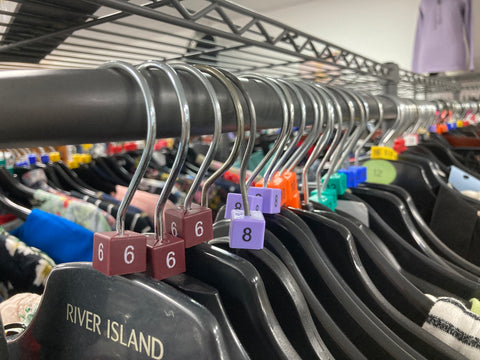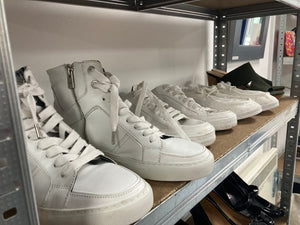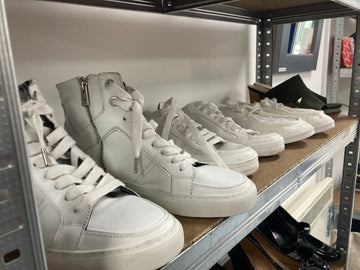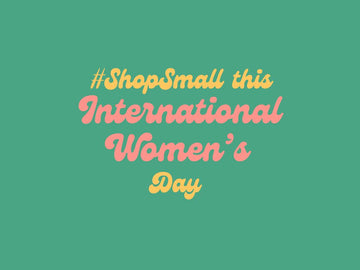Is a Second Hand Clothing Business Profitable - And Does That Matter?
Second hand fashion is no longer a taboo and wearing "charity shop clothes" is no longer an insult, it's a positive fashion statement! But is a second hand clothing business profitable, and does that even matter?
Before we get into it, if you don't already know us, we're Green Heart Collective, a social enterprise based in Gateshead that has been rescuing fashion, books, yoga equipment and more from landfill since December 2019. So we have our own perspective on the second hand clothing industry and the challenges in making a profit while encouraging an alternative to mass consumerism.
Is Second Hand Clothing Profitable - And Does It Matter?
Did You Know That These Second Hand Clothing Brands Don't Turn a Profit?
It may come as a shock to you, but some of your favourite second hand marketplaces are struggling to make a profit.
US consignment and thrift store ThredUp and designer clothes marketplace The RealReal are not profitable, according to sources quoted by the BBC.
Vinted posted a pre-tax loss of about £40.3m in 2022, while Depop posted a loss of £59m in 2023.
The only platform that might be on course to make a profit by the end of the year is Vestiaire Collective.
Why There Isn't More Profit in Second Hand Fashion
Fast Fashion
Fast fashion causes two problems that result in driving down profits in second hand clothing just a few wears down the line.
The first problem is to do with just how cheap fast fashion is. Fast fashion is usually impossibly cheap.
Read More: Fast Fashion Facts: The Power of Fashion to Change our Planet
Often people will walk into our shop and exclaim how expensive everything is and how they can get a top or pair of trousers cheaper in Primark.
But they haven't stopped to think about just how much work goes into creating that single item. From growing or creating the very materials that make up clothes, to manufacturing and stitching a garment together, transport and logistics, there's so much involved even in the cheapest pieces of clothing.
The second problem is that more of the clothes donated to charity shops or to textile recycling banks are fast fashion and are of much poorer quality. These clothes were sold for peanuts in the first place, so professional resellers, or even the second hand clothing markets in Ghana are reporting that clothes are not even worth selling. They simply have no value.
One Swedish charity reported having to pay to incinerate 70% of the donated clothing it received because of the substandard quality of garments.
Redistributing Garments is Costly

There is a lot of work behind the scenes to turn a pile of clothing donations into items that are ready to sell to the public.
Even before you sell anything you have to consider overheads, rent, energy bills.
Even at a small scale, such as our little shop on Gateshead High Street, there is then a lengthy process to any piece of clothing that gets listed on our website, for example.
The Process of Reselling Second Hand or Deadstock Fashion Online
Listing
Any garment coming in needs to be checked for any damages, flaws, quirks and for cleanliness.
We then sort and tag items, assigning them to a particular box. Some basic information about the garment is inputted into our system at this point such as size, colour etc.
The next stage is giving an item its 'second listing' where we write more of a description about the item and any extra details about the style and fit.
Then it's photography time. Depending on whether an item is used or new with tags and how it has been stored and cleaned, we may lightly steam a garment so it is looking its best to be photographed. Then we ensure that we photograph any sort of flaw or mark.
Once the photos are sorted, the 'box' is ready to upload online.
Picking and Packing
When an item sells, we hand pick each item and pack it using repurposed packaging. This in itself is no small task, especially after a long weekend. We are lucky to have some fantastic volunteers who help us with this.
Returns and Customer Service
The work isn't finished when an item is dispatched. We spend a good portion of time making sure our customers are happy with their orders. This may involve chasing up couriers to see where parcels are, or taking extra measurements on garments to better advise our buyers on their prospective purchases.
We also have to deal with returns. Most of the time these are items that do not fit. Each item that is returned has to be checked carefully to ensure items have not been worn or damaged in transit, so that they can be relisted for someone else to buy and love.
At the end of this process, we are delighted when our customers tell us how much they love a particular item. It definitely feels worth it. At time of writing, the lowest that we sell a garment for, including delivery is £7.50.
When you factor in all the work that has gone into this, this is a pretty good deal, especially for many of the new deadstock items that we have rescued and sold.
By the way, that's without talking about other overheads, rent or paying the real living wage.
Profit in A Circular Economy
In our more linear economic system, businesses are focused on making a profit to survive. But the question is firstly, how much profit do businesses really need to make. Especially when you consider some of the highest grossing businesses in the world measure their profit in the billions. Also, what cost is there to people and planet?
Read More: Why is a Circular Economy Important?
It isn't just about how much profit you make. It is what you do with the profit.
Profit in itself is not a bad thing, especially when it is shared among workers, rather than paid out as dividends.
As a social enterprise, our profits are reinvested back into our business and our mission to rescue items from landfill.
We're just one of 131,000 social enterprises in the UK with the power to turn business into a power for good.
Read More: We've Been Certified and It's a Good Thing
Meanwhile, the profits made by UK water companies, for example, are often paid out as dividends to shareholders as Joe Lycett recently pointed out.
Degrowth Fashion
We always measure our economies by their growth. You may well already be familar with GDP (gross domestic product) which takes into account all the goods and services produced by a country. It's usually seen as a good thing, a measure of the success of a country.
But the definition of GDP is far from perfect! As pointed out by EF Schumacher in his seminal work "Small is Beautiful", if you move something from A to B to C and then back to A, you have achieved nothing but the GDP has financially benefitted from three pointless, environmentally unfriendly journeys.
Economic 'growth' and this idea of 'progress' comes at a cost.
We cannot have infinite growth on the finite planet that we call home.
Some critics of capitalism call for degrowth, which in a nutshell promotes a more circular and local economy.
In terms of fashion this means cutting back on consumption and production. Fewer, better quality clothes through a slow fashion movement. Wearing what we have already, buying second hand or swapping clothes when we need something 'new'.
In an ideal circular economy there will be scaling back production, especially in terms of fashion because we should be finding ways to keep on wearing all the clothes we already have on this planet before flooding it with even more.
But there is still a great deal of work as we previously explained in redistributing, upcycling, mending, cleaning, listing, photographing, picking, packing, posting of even just used garments.
And of course at some point, we still need some form of brand new clothing. But it could be made in a slower way which thinks about end of product life and longevity, rather than maximum profit.
Read More: What is Slow Fashion
"In her book, Consumed, Aja Barber says that degrowth is a matter of long-term survival for businesses. This is especially true for large companies reliant on extractive practices, fossil fuels and cheap labour. It’s clear that rich countries must balance their economies with planetary boundaries: the survival of many people around the world already depends on it." - Lauren Rees, Fashion Revolution





